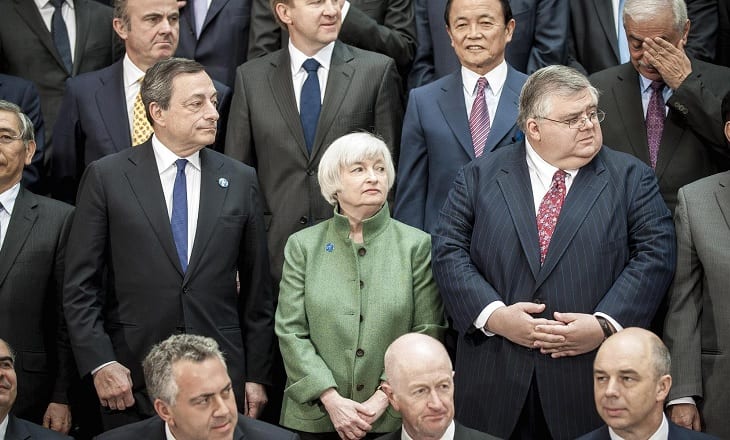The following article was written by Ipek Ozkardeskaya, Senior Market Analyst at FCA regulated broker London Capital Group Holdings plc (LON:LCG).

Ipek Ozkardeskaya, LCG
June has been full of surprises for currency traders as some of the leading central banks displayed a significant shift in their policy or rhetoric that could be a game changer for the rest of the year.
In this article, we focus on the Federal Reserve (Fed), the Bank of England (BoE) and the Bank of Canada (BoC).
Fed increased rates by 25 basis points
The US Federal Reserve (Fed) raised the Fed funds rate by 25 basis points at its June meeting, as widely expected and priced in by the global markets.
The FOMC also announced that another rate hike is imminent before the end of the year, three more rate hikes are due during the course of the next year and the balance sheet normalisation will begin in the foreseeable future.
Although the Fed sounded firm regarding its rate and portfolio normalisation plans, the markets reacted on the opposite direction.
The US dollar depreciated. The US sovereign yield curve flattened; the short end of the curve shifted slightly higher compared to a month earlier, the 10-year yields fell to the lowest levels since November 2016.
The US stock markets extended gains.
The expectation for the next rate hike were pushed back to December and the odds fell to 40%.
Three BoE MPC members voted to raise rates
The biggest surprise certainly came from the Bank of England (BoE). Three of the Monetary Policy Committee (MPC) members votes to raise the interest rates in the UK in the June meeting, compared to a single vote in the previous meeting. Rising inflationary pressures in the UK moved two more members to the BoE’s hawkish camp as the headline inflation hit 2.9% in May.
Governor Carney talked down the premature rate hike expectations by announcing that it is not the right time to raise rates in the UK. Weak wages growth and the Brexit uncertainties require a loose monetary policy according to Carney, as he is willing to see the reaction of the economy to the ‘Brexit reality’.
Yet, the BoE’s chief economist Andy Haldane said he may also vote for a rate hike in the second half of the year, given that a late policy action could require a steeper rate increase path in the future. His statement stood out against Governor Carney’s call to keep the rates at the historical low levels.
In summary, the situation got somewhat muddy at the heart of the BoE’s MPC.
Of course the BoE could tolerate an inflation above 3% by justifying the extraordinary conditions the UK is facing due to the Brexit. However, the UK’s solid labour market could go against the argument that the economy needs loose monetary conditions to stay solid through the Brexit period.
To us, it is obvious that the current levels in the pound could only enhance the inflationary pressures and increase the tension between the BoE’s hawks and the doves. The end result could be a recovery in the pound against the US dollar and the euro, with times of increased volatility due to the political shakes inside the UK and/or due to the EU negotiations.
BOC’s Poloz gave a positive spin to the Loonie
Finally, the Bank of Canada (BoC) kept its benchmark rate unchanged at May 24 meeting. Yet Governor Poloz commented that the interest rate cuts put in place in 2015 ‘have largely done their work’ and hinted that the bank’s next move would be a rate hike, rather than a rate cut. The probability of a BoC rate hike jumped to 77% from roughly 25% before the comments.
The USDCAD lost three big figures in three sessions only. The Loonie recovered 75% of losses against the US dollar recorded between February and May.
Although the cheap oil remains a severe headache for the Canadian dollar, the narrowing divergence between the Fed and the BoC should remain supportive of a stronger Loonie against the greenback in the second half of the year.
